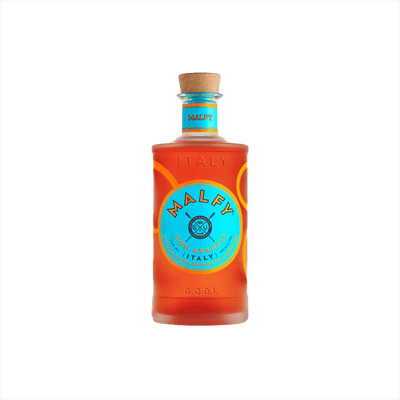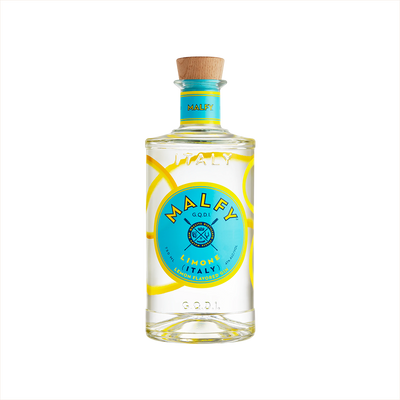Citrus-Flavored Gin
What is Citrus-Flavored Gin?
Citrus-flavored gin represents a vibrant category within Flavored Gin that emphasizes bright, zesty citrus notes through the addition of fresh citrus peels, oils, or extracts during the distillation process. These gins typically feature prominent flavors from lemons, limes, oranges, grapefruits, or exotic citrus varieties like yuzu and bergamot, which complement the traditional juniper base while adding a refreshing, acidic brightness. What defines citrus-flavored gin is this deliberate amplification of citrus characteristics beyond what you'd find in classic London Dry styles, creating spirits that burst with sunshine and make exceptional foundations for summer cocktails.
Learn More About Citrus-Flavored Gin
What makes Citrus-Flavored Gin unique?
Citrus-flavored gin stands apart from other flavored gins through its ability to amplify gin's natural botanical brightness rather than mask it, creating a spirit that feels like a concentrated version of gin's best qualities. While berry or floral gins often push the spirit into entirely new territory, citrus varieties work in harmony with juniper's piney notes, creating a seamless integration that maintains gin's essential character. The oils from lemon, lime, orange, or grapefruit peels add both aromatic intensity and a natural acidity that makes these gins exceptionally versatile in cocktails, from classic martinis to contemporary creations.
How is Citrus-Flavored Gin made?
Citrus-flavored gin starts with a neutral grain spirit that gets infused with juniper berries and a carefully selected blend of citrus peels—think lemon, lime, orange, or grapefruit zest—along with other botanicals during the distillation process. Most distillers use either vapor infusion, where the citrus oils are extracted as alcohol vapors pass through the peels, or maceration, where the peels steep directly in the spirit before redistillation. The key lies in timing and temperature control, as citrus oils are delicate and can turn bitter if overextracted, so master distillers monitor each batch closely to capture those bright, zesty notes without any harsh edges.
How do you drink Citrus-Flavored Gin?
Citrus-flavored gin shines brightest in cocktails where its bright, zesty character can play with other ingredients rather than being sipped neat or on the rocks. Classic gin cocktails like the Gin & Tonic, Tom Collins, and Gimlet become even more refreshing with citrus-forward gins, while modern creations often highlight these spirits in summer spritzers and herb-laden garden cocktails. These vibrant gins are perfect for warm-weather entertaining, outdoor gatherings, and any time you want a drink that feels like sunshine in a glass – though their crisp profile works beautifully year-round when you need something to brighten up dreary winter days.
How do I choose good Citrus-Flavored Gin?
Start by considering whether you want bright, zesty lemon and lime notes or something more exotic like yuzu or bergamot – each citrus profile will completely change your cocktail's personality. For classic drinks like a Gin & Tonic or Tom Collins, stick with traditional lemon-forward gins that won't compete with your mixers, but if you're making a Negroni or Aviation, look for gins with orange or grapefruit notes that can stand up to stronger ingredients. Always taste the gin neat first to understand its citrus intensity – some are subtle whispers while others are bold statements, and matching that strength to your intended cocktail will make all the difference.
Nutritional Information
Typical Calorie Range per Ounce: 64-75 calories
Typical Carbohydrate Range per Ounce: 0-2 grams
Typical Sugar Range per Ounce: 0-1 gram
Typically Gluten Free: Yes
Most citrus-flavored gins fall within these ranges, though flavored varieties may contain slightly higher carbohydrate and sugar content compared to traditional London Dry styles. The citrus flavoring typically comes from natural botanicals or essential oils rather than added sugars, keeping the nutritional profile relatively clean.
While gin is generally considered gluten-free due to the distillation process that removes gluten proteins, we always recommend checking the detailed product information on specific brands to confirm gluten-free status, especially if you have celiac disease or severe gluten sensitivity. Some flavored gins may use different production methods or additives that could affect their gluten-free status.
Scrolled this far? Your reward? Citrus-Flavored Gin Trivia!
- The first citrus gin wasn't made with fresh fruit at all. Early distillers in the 1700s used dried orange peels from China and India because fresh citrus spoiled during long sea voyages. These concentrated peels actually created more intense flavors than today's fresh citrus additions, which explains why some of the oldest gin recipes still call for dried botanicals rather than fresh zest.
- Grapefruit gin was accidentally invented by a Scottish distiller trying to make medicine. In 1923, Alexander Gordon's nephew was attempting to create a digestive tonic using pink grapefruit peels when he accidentally over-distilled the batch. Instead of throwing it out, he tasted it and realized he'd created something completely new. This "mistake" became one of the first commercially successful grapefruit-forward gins.
- Some citrus gins contain zero actual citrus fruits. Master distillers discovered that certain combinations of angelica root, coriander, and specific hop varieties can perfectly mimic citrus flavors without using any citrus botanicals whatsoever. These "phantom citrus" gins often fool even professional tasters in blind tastings, proving that our perception of flavor is far more complex than we realize.
- The world's most expensive citrus gin uses lemons that cost $200 each. Japanese Yubari King melons aren't the only luxury fruit making waves in spirits. A small-batch distillery in Italy sources rare Sfusato lemons from Amalfi Coast trees that are over 100 years old. These lemons are hand-picked at dawn and distilled within four hours, creating a gin that sells for over $300 per bottle.
- Blood orange gin changes color based on the pH of your mixer. The anthocyanins responsible for blood oranges' deep red color are natural pH indicators. Mix blood orange gin with tonic (slightly acidic) and it stays reddish. Add a splash of baking soda or egg white, and watch it shift toward purple or blue. It's like having a chemistry experiment in your cocktail glass.
Higher-proof spirits can be intense. Mix carefully, taste thoughtfully, and enjoy responsibly.
Gift message (optional)



